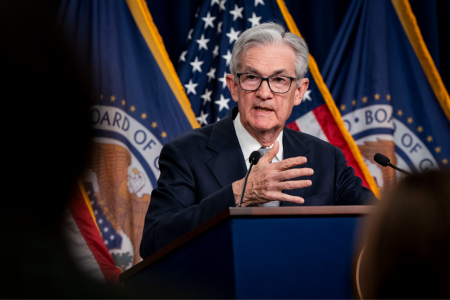Oil Prices Surge on U.S. Sanctions Against Russia
13 Jan 2025Oil Prices Surge on U.S. Sanctions Against Russia
Oil prices jumped Friday after the U.S. rolled out sanctions on Russia’s oil sector. Oil prices surged for the third straight session on Monday, with Brent crude breaking above $80 per barrel for the first time in over four months. The rally was fueled by expanded U.S. sanctions targeting Russian oil exports, which triggered supply concerns and reshaped global crude flows, particularly for top importers India and China. Brent crude futures jumped $1.20, or 1.5%, to $80.96 per barrel by 1022 GMT, after hitting $81.49, its highest level since late August. U.S. West Texas Intermediate (WTI) crude also surged, rising $1.30, or 1.7%, to $77.87 per barrel, after peaking at $78.58, the most since mid-August. Both Brent and WTI have soared by about 6% since January 8, driven by the U.S. Treasury’s latest sanctions on Russia’s oil sector. These measures, announced Friday, target major producers, including Gazprom Neft and Surgutneftegaz, alongside 183 vessels transporting Russian crude.
The sanctions aim to curtail the revenue streams that have supported Moscow’s war efforts in Ukraine. The sanctions are expected to significantly disrupt Russian oil exports, forcing major buyers such as India and China to turn to suppliers in the Middle East, Africa, and the Americas. This redirection will likely tighten global supply, increasing oil prices and shipping costs. Concerns about potential supply interruptions are intensifying, The worst-case scenario for Russian oil is becoming increasingly realistic.
While the sanctions include a wind-down period until March 12, immediate impacts may be muted. According to Virturo estimates, the vessels targeted by the sanctions transported around 1.7 million barrels per day (bpd) in 2024—roughly 25% of Russia’s total exports.
Virturo analysts now expect Brent crude prices to exceed their initial $70-85 range as supply constraints intensify. Tightening supplies have pushed monthly spreads for Brent and WTI to their widest backwardation levels since Q3 2024. Backwardation, where near-term prices exceed those of future months, signals strong demand and limited availability. Capital Markets highlighted the logistical hurdles caused by the doubling of sanctioned tankers. These vessels are effectively off-limits now, creating major challenges for global crude flows, Despite potential supply disruptions, OPEC+ producers are poised to fill the gap. The cartel, comprising OPEC members and Russia-led allies, withholds 5.86 million bpd of spare production capacity—around 5.7% of global demand—offering flexibility to address shortages. Many of the newly sanctioned tankers were previously used to reroute Russian oil from Europe to Asia following earlier sanctions and the Group of Seven’s 2022 price cap. These vessels have also transported Iranian oil, another heavily sanctioned product. The latest U.S. sanctions will be particularly impactful for India, a key buyer of Russian oil While Russia may face mounting challenges, analysts suggest it has some maneuver options. These include using non-sanctioned vessels or pricing crude below $60 per barrel to meet Western insurance requirements under the price cap. However, these sanctions significantly escalate the pressure on Russia’s oil sector, with the global energy landscape poised for further disruption.
Oil prices jumped Friday after the U.S. rolled out sanctions on Russia’s oil sector. Oil prices surged for the third straight session on Monday, with Brent crude breaking above $80 per barrel for the first time in over four months. The rally was fueled by expanded U.S. sanctions targeting Russian oil exports, which triggered supply concerns and reshaped global crude flows, particularly for top importers India and China. Brent crude futures jumped $1.20, or 1.5%, to $80.96 per barrel by 1022 GMT, after hitting $81.49, its highest level since late August. U.S. West Texas Intermediate (WTI) crude also surged, rising $1.30, or 1.7%, to $77.87 per barrel, after peaking at $78.58, the most since mid-August. Both Brent and WTI have soared by about 6% since January 8, driven by the U.S. Treasury’s latest sanctions on Russia’s oil sector. These measures, announced Friday, target major producers, including Gazprom Neft and Surgutneftegaz, alongside 183 vessels transporting Russian crude.
The sanctions aim to curtail the revenue streams that have supported Moscow’s war efforts in Ukraine. The sanctions are expected to significantly disrupt Russian oil exports, forcing major buyers such as India and China to turn to suppliers in the Middle East, Africa, and the Americas. This redirection will likely tighten global supply, increasing oil prices and shipping costs. Concerns about potential supply interruptions are intensifying, The worst-case scenario for Russian oil is becoming increasingly realistic.
While the sanctions include a wind-down period until March 12, immediate impacts may be muted. According to Virturo estimates, the vessels targeted by the sanctions transported around 1.7 million barrels per day (bpd) in 2024—roughly 25% of Russia’s total exports.
Virturo analysts now expect Brent crude prices to exceed their initial $70-85 range as supply constraints intensify. Tightening supplies have pushed monthly spreads for Brent and WTI to their widest backwardation levels since Q3 2024. Backwardation, where near-term prices exceed those of future months, signals strong demand and limited availability. Capital Markets highlighted the logistical hurdles caused by the doubling of sanctioned tankers. These vessels are effectively off-limits now, creating major challenges for global crude flows, Despite potential supply disruptions, OPEC+ producers are poised to fill the gap. The cartel, comprising OPEC members and Russia-led allies, withholds 5.86 million bpd of spare production capacity—around 5.7% of global demand—offering flexibility to address shortages. Many of the newly sanctioned tankers were previously used to reroute Russian oil from Europe to Asia following earlier sanctions and the Group of Seven’s 2022 price cap. These vessels have also transported Iranian oil, another heavily sanctioned product. The latest U.S. sanctions will be particularly impactful for India, a key buyer of Russian oil While Russia may face mounting challenges, analysts suggest it has some maneuver options. These include using non-sanctioned vessels or pricing crude below $60 per barrel to meet Western insurance requirements under the price cap. However, these sanctions significantly escalate the pressure on Russia’s oil sector, with the global energy landscape poised for further disruption.



